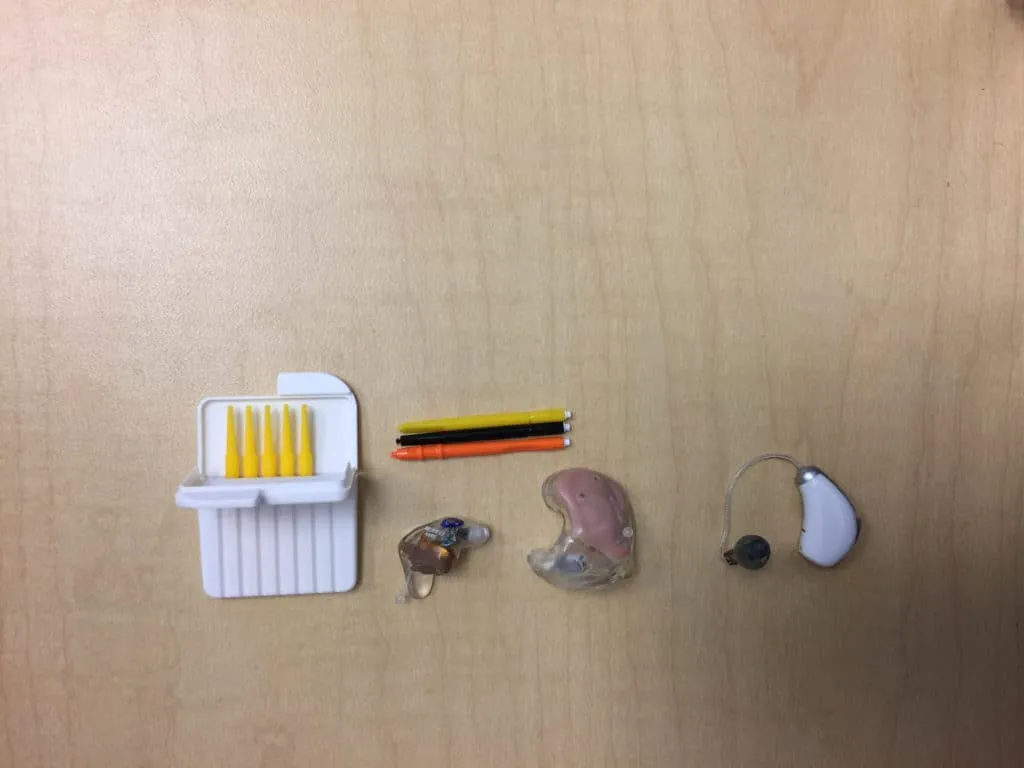By Dr. Jonathan Javid, Au.D.
When your hearing aids cut in and out, it’s more than just frustrating—it interferes with your daily conversations, work meetings, and personal connections. Intermittent function is one of the most common issues hearing aid users experience. Fortunately, many of the root causes can be addressed at home.
Hearing aids are advanced wearable electronics. Like all electronics, they are vulnerable to moisture, wear and tear, and environmental factors. Below are six common causes and how to troubleshoot them.
1. Moisture Problems
Moisture is the leading reason hearing aids stop working properly. Despite advancements such as nano-coating and water-resistant technology, moisture remains the #1 cause of devices cutting in and out. It enters through rain exposure, sweat, or even humid environments.
Moisture can clog the microphones, wax traps, tubing, and receivers. It especially becomes problematic in warmer weather or during physical activity.
The simple solution? Use a hearing aid dryer. We reviewed several drying devices in our article on best hearing aid dryers. Daily use of these tools can extend the life of your devices significantly.

2. Wax Trap Blockages
Wax traps (also called wax guards) are small filters designed to catch earwax before it clogs your hearing aid. Unfortunately, once they’re full, they can block sound and cause inconsistent performance.
A key symptom is when your aid works well in the morning but fades throughout the day. Heat from your body melts wax and moisture, causing the debris to swell and block sound. When you remove the aid, it cools and works again—until you reinsert it.
If this sounds familiar, your wax trap needs replacing. Learn how to do this in our guide: How to change wax traps for every major brand.

3. Cold Weather and Battery Power
Cold weather can cause hearing aids to shut down due to decreased battery efficiency. Just like smartphones and cars, hearing aid batteries struggle in freezing temperatures. Most manufacturers recommend operation between 34°F to 104°F (1°C to 40°C).
While body heat helps, extended exposure to cold can reduce power output, causing your aids to turn off unexpectedly. Replace your batteries frequently in the winter and wear a beanie or earmuffs to help insulate the device.
If you use rechargeable hearing aids, consider bringing a backup charger or storing your devices in a warm pocket when not in use. For more tips, read our article on battery life and tips.
4. Worn or Bent Battery Contacts
Over time, the small metal contacts inside your hearing aid can get bent or worn. If they don’t press firmly against the battery or charging port, your device may cut out randomly.
This is especially common in hearing aids that are turned on and off daily by opening and closing the battery door. Examine the contacts with a magnifying glass or bring the aid to your audiologist for inspection.
If the device is rechargeable and cuts out frequently, the charging port or docking station may be misaligned. Learn more about troubleshooting in our guide to cleaning and maintaining hearing aids.
5. Loose Receiver Wire in RIC Devices
Most modern hearing aids are Receiver-in-Canal (RIC) style. These devices use a thin wire to connect the main unit to the speaker in your ear canal.
Sometimes, this wire becomes loose or disconnected. Movement while chewing, talking, or putting on glasses can briefly interrupt the electrical connection—causing sound to cut in and out.
Press the wire firmly into place. If the issue persists, visit your hearing professional to have the receiver wire replaced.
6. BTE Tubing Maintenance
If you use Behind-the-Ear (BTE) hearing aids, worn tubing is a likely culprit. Over time, tubing can harden, shrink, or collect moisture and wax, restricting airflow and sound quality.
Tubing should be changed every 3–6 months as part of routine maintenance. This keeps sound flowing freely and prevents issues like feedback, muffled sound, or intermittent connection.
Learn how to change tubing with our step-by-step guide: When to replace domes and tubing.
Final Thoughts: Time for a Repair or Replacement?
If none of the above issues apply, it may be a deeper circuit or internal failure. In that case, your hearing aid likely needs professional repair. Learn more about hearing aid repair costs.
Fortunately, most professionally fit hearing aids come with a two- to three-year manufacturer warranty. Repairs within that time are usually free or minimal cost.
If your device is older, out of warranty, or purchased online without professional fitting, it may be more economical to upgrade to a new hearing aid. Technology has improved dramatically in recent years, especially for noise handling and Bluetooth connectivity.
Not sure which direction to go? Read our comparison of PSAPs, OTC, and professionally fit hearing aids for a clearer understanding.

